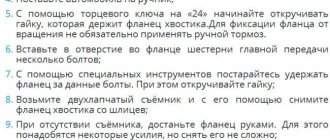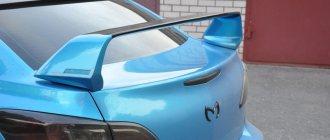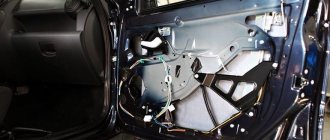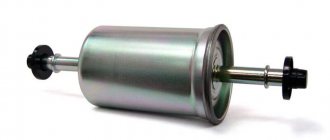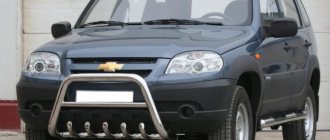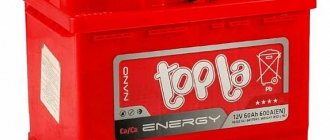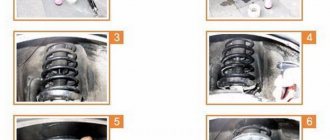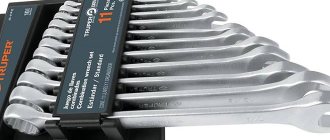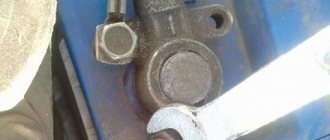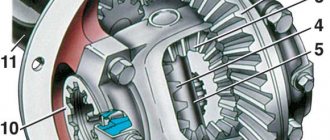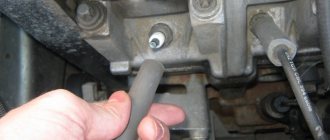Transmission tuning. How to choose gear ratios for a gearbox?
Most of the technologies used in transmission tuning are proven in motorsports.
The transmission of any, especially a sports car, is the most important mechanism for realizing the dynamic characteristics of the engine. Even with a relatively weak engine, the car can be fast due to correctly selected gear ratios. In motorsport, synchronized (as on 'road' cars) and non-synchronized (cam) gearboxes are used. Based on the shifting principle, they are divided into conventional (H-pattern) and sequential (with sequential gear selection, like on motorcycles).
In cars of a fairly serious level of preparation, cam gearboxes are used. They have a number of advantages - they can withstand higher loads (due to the shape of the tooth and the gear-cam clutch engagement), allow experienced pilots to spend less time changing gears due to incomplete squeezing of the clutch or without squeezing the clutch at all, they do not destroy synchronizers (which are simply No).
For normal road traffic, cam gearboxes are practically unsuitable, since they are quite noisy (due to the operation of spur gear pairs), “hard” when engaging a gear, and have a relatively short resource. In addition, they are disproportionately more expensive than synchronized ones and require regular qualified maintenance.
Synchronized gearboxes differ from standard ones only in gear ratios. In some cases (VAZ-2108 and -2110) it is possible to add a 6th gear. The correct selection of gear ratios of the main gearbox pair, the input shaft and the driven gears of the secondary shaft is the key to coordinated operation of the transmission. Gear ratios are selected depending on the power and torque characteristics of the engine, wheel size and, most importantly, on the wishes of the car owner.
The gear ratio is the ratio of the number of teeth on the driven gear to the number of teeth on the drive gear. The higher it is, the “shorter” and “more powerful” the transmission is, that is, the engine very quickly turns out the required number of revolutions, the acceleration occurs just as quickly, but there is a need for frequent gear changes. As a result, there is a slight decrease in the maximum speed in this gear.
Gearbox row table 2108
| Dial number | Gear number | |||||
| 1 | 2 | 3 | 4 | 5 | 6 | |
| Serial gearbox | 40/11 3.64 | 39/20 1.95 | 38/28 1.36 | 32/34 0.94 | 29/37 0.78 | 27/39 0.69 |
| 08 row - commercial | 41/12 3.42 | 39/19 2.05 | serial | 32.33 0.97 | — | — |
| 05 ROW | 38/13 2.92 | 38/21 1/81 | 37/29 1.28 | 33/34 0.97 | — | — |
| 011 row | serial | 40/18 2.22 | 40/26 1.54 | 35/30 1.17 | 31/35 0.89 | — |
| 012 row | 38/12 3.17 | serial | serial | 33/32 1.03 | — | — |
| 018 row | 38/12 3.17 | 40/19 2.11 | 40/27 1.48 | 35/31 1.13 | 31/35 0.89 | — |
| 06 row | 38/13 2.92 | 38/21 1.81 | 37/29 1/28 | 34/32 1.06 | 32/34 0.94 | 29/37 0.78 |
| 07 row | 38/13 2.92 | 39/19 2.05 | 28/18 1.56 | 38/29 1.31 | 35/31 1.13 | 32/34 0.94 |
| 026 row | 41/12 3.42 | 38/15 2.53 | 35/17 2.06 | 33/19 1.74 | 34/23 1.48 | 33/26 1.27 |
| 074 row | 38/12 2.667 | 29/15 1.933 | 27/17 1.588 | 26/19 1.368 | — | — |
| Number of teeth | 63/17 | 62/15 | 65/15 | 63/14 | 66/14 | 64/13 | 69/13 |
| Broadcast | 3.7 | 4.13 | 4.33 | 4.5 | 4.71 | 5.08 | 5.31 |
Vehicle speed at 5000 rpm.
Wheels: width 185, profile 60, rim R 14.
| Serial gearbox | 1 before 3,64 40/11 | 2 before 1,95 39/20 | 3 before 1,35 38/28 | 4 before 0,94 32/34 | 5 before 0,78 29/37 | 6 before 0,69 27/39 |
| 3,7 | 40 | 74 | 106 | 154 | 184 | 209 |
| 3,9 | 38 | 70 | 101 | 145 | 174 | 198 |
| 4,1 | 36 | 67 | 96 | 139 | 166 | 188 |
| 4,3 | 34 | 64 | 92 | 132 | 159 | 180 |
| 05 row | 2,92 38/13 | 1,81 38/21 | 1,2737/29 | 0,96 32/33 | 0,78 29/37 | 0,69 27/39 |
| 3,7 | 50 | 80 | 114 | 149 | 184 | 209 |
| 3,9 | 47 | 76 | 108 | 141 | 174 | 198 |
| 4,1 | 45 | 72 | 102 | 134 | 166 | 188 |
| 4,3 | 43 | 69 | 98 | 128 | 159 | 180 |
| 06 row | 2,92 38/13 | 1,81 38/21 | 1,2737/29 | 1,06 34/32 | 0,94 32/34 | 0,78 29/37 |
| 3,7 | 50 | 80 | 114 | 136 | 154 | 184 |
| 3,9 | 47 | 76 | 108 | 129 | 145 | 174 |
| 4,1 | 45 | 72 | 102 | 122 | 139 | 166 |
| 4,3 | 43 | 69 | 98 | 117 | 132 | 159 |
| 07 row | 2,92 38/13 | 2,05 39/19 | 1,56 28/18 | 1,31 28/29 | 1,13 35/31 | 0,94 32/34 |
| 3,7 | 50 | 70 | 93 | 110 | 128 | 154 |
| 3,9 | 47 | 67 | 88 | 105 | 121 | 145 |
| 4,1 | 45 | 63 | 84 | 100 | 116 | 139 |
| 4,3 | 43 | 61 | 80 | 95 | 110 | 132 |
| 08 row | 3,42 41/12 | 2,11 40/19 | 1,35 38/28 | 0,96 32/33 | 0,78 29/37 | 0,69 27/39 |
| 3,7 | 42 | 69 | 106 | 149 | 184 | 209 |
| 3,9 | 40 | 65 | 101 | 141 | 174 | 198 |
| 4,1 | 38 | 62 | 96 | 134 | 166 | 188 |
| 4,3 | 36 | 59 | 92 | 128 | 159 | 180 |
| 011 row | 3,64 40/11 | 2,22 40/18 | 1,54 40/26 | 1,17 35/30 | 0,87 31/35 | 0,78 29/37 |
| 3,7 | 40 | 65 | 94 | 124 | 163 | 184 |
| 3,9 | 38 | 62 | 89 | 117 | 155 | 174 |
| 4,1 | 36 | 59 | 85 | 112 | 147 | 166 |
| 4,3 | 34 | 56 | 81 | 107 | 140 | 159 |
| 012 row | 3,17 38/12 | 1,95 39/20 | 1,35 38/28 | 1,03 33/32 | 0,78 29/37 | 0,69 27/39 |
| 3,7 | 46 | 74 | 106 | 140 | 184 | 209 |
| 3,9 | 43 | 70 | 101 | 133 | 174 | 198 |
| 4,1 | 41 | 67 | 96 | 126 | 166 | 188 |
| 4,3 | 39 | 64 | 92 | 119 | 159 | 180 |
| 018 row | 3,17 38/12 | 2,11 40/19 | 1,48 40/27 | 1,13 35/31 | 0,87 31/35 | 0,78 29/37 |
| 3,7 | 46 | 69 | 98 | 128 | 163 | 184 |
| 3,9 | 43 | 65 | 92 | 121 | 155 | 174 |
| 4,1 | 41 | 62 | 88 | 116 | 147 | 166 |
| 4,3 | 39 | 59 | 84 | 110 | 140 | 159 |
| 200row | 2,92 38/13 | 2,22 40/18 | 1,76 37/21 | 1,39 39/28 | 1,17 35/30 | 0,94 32/34 |
| 3,7 | 50 | 65 | 82 | 104 | 124 | 154 |
| 3,9 | 47 | 62 | 78 | 99 | 117 | 145 |
| 4,1 | 45 | 59 | 73 | 93 | 112 | 139 |
| 4,3 | 43 | 56 | 71 | 89 | 107 | 132 |
| 1 before | 2 before | 3 before | 4 before | 5 before | 6 before | |
| 1 before | 2 before | 3 before | 4 before | 5 before | 6 before | |
| 102 row | 3,17 38/12 | 1,95 39/20 | 1,35 38/28 | 0,94 32/34 | 0,73 | |
| 3,7 | 46 | 74 | 106 | 154 | 196 | |
| 3,9 | 43 | 70 | 101 | 145 | 188 | |
| 4,1 | 41 | 67 | 96 | 139 | 178 | |
| 4,3 | 39 | 64 | 92 | 132 | 170 | |
| 103 row | 2,92 38/13 | 1,95 39/20 | 1,35 38/28 | 0,94 32/34 | 0,69 27/39 | |
| 3,7 | 50 | 74 | 106 | 154 | 209 | |
| 3,9 | 47 | 70 | 101 | 145 | 198 | |
| 4,1 | 45 | 67 | 96 | 139 | 188 | |
| 4,3 | 43 | 64 | 92 | 132 | 180 | |
| 104 row | 2,92 38/13 | 1,95 39/20 | 1,35 38/28 | 1,03 33/32 | 0,73 | |
| 3,7 | 50 | 74 | 106 | 140 | 196 | |
| 3,9 | 47 | 70 | 101 | 133 | 188 | |
| 4,1 | 45 | 67 | 96 | 126 | 178 | |
| 4,3 | 43 | 64 | 92 | 119 | 170 | |
| 111 row | 3,17 38/12 | 2,22 40/18 | 1,54 40/26 | 1,17 35/30 | 0,81 30/37 | |
| 3,7 | 46 | 65 | 94 | 124 | 184 | |
| 3,9 | 43 | 62 | 89 | 117 | 175 | |
| 4,1 | 41 | 59 | 85 | 112 | 166 | |
| 4,3 | 39 | 56 | 81 | 107 | 158 | |
| 26 cam | 3,417 | 2,533 | 2,059 | 1,737 | 1,478 | 1,269 |
| 777 cam | 2,909 32/11 | 2,000 30/15 | 1,588 27/17 | 1,316 25/19 | 1,143 24/21 | 0,9 18/20 |
| 719 cam | 2,667 32/12 | 1,933 29/15 | 1,538 20/13 | 1,316 25/19 | 1,143 24/21 | 0,9 18/20 |
Row 26 is straight-toothed.
Sixth gear of nine types:
| 1) 0.78 / 0.69 standard | 2) 0.87 / 0.78 to the 18th row | 7) 1.13 / 0.78 to 7 tune |
| 3) 0.87 / 0.73 to the 18th row of Tune | 4) 1.13 / 0.94 to row 7 |  1.17/0.78 to 200 tun 1.17/0.78 to 200 tun |
| 5) 0.94 / 0.78 to the 6th row | 6) 1.17 / 0.94 to 200 row | 9) 0.87/ 0.69 to 18 tune |
WHEN INSTALLING:
The main pair is 4.1 - the engine is unloaded, it is easier for the motor to spin the wheels, the dynamics of the car increase, the gears are shortened, the maximum speed drops by ~20 km. per hour (at 160 km/h, tachometer revolutions are 5 thousand), fuel consumption + 1 liter. (due to changes in driving).
The main pair 4.3 is the same as 4.1 + 5 mph. in all gears.
Ch. pair 4.1 or 4.3 + sports series (06, 07 or 08): dynamics (fast acceleration due to the main pair) + long gears, mainly 1st and 2nd spin up to the maximum.
Ch. pairs 4.5 and 4.7: gears are even shorter than 4.1 and 4.3 (maximum speed at 5 thousand tachometer revolutions is 140 km/h), recommended use: when towing and transporting heavy trailers.
Ch. pairs 4.9, 5.1, 5.3 and 5.07: used only on steep slopes and climbs (maximum speed 110-120 mph)
Rows: 011, 012, 018 - installation with standard chapter. a pair of 3.9 for forced engines 1.7, 1.8 and 2.0l.
26th cam row (semi-automatic) - gear shifting is carried out without using the clutch, squeezing the clutch is only necessary when starting and stopping.
6th gear retains maximum speed when using ch. couples and sports. row.
Locker (locking differential):
Worm (screw) - increases the vehicle's off-road capability; when one wheel slips, the second wheel automatically turns on (it also turns on when turning).
Disc (friction) - ensures constant rotation of 2 wheels. (Recommended for use only off-road)
Unacceptable:
- Shift into gear with a crunch.
- Switch quickly from gear to gear.
- It is rude to engage the gears (if the gear does not engage, do not forcefully engage it, but release it again and press the clutch, and repeat its engagement).
If you violate the above instructions, the service life of the gears, and accordingly the gearbox, will sharply decrease!!!
Also, it is highly undesirable to start with slipping. Such systematic driving leads to the collapse of the differential, which breaks the gearbox (the large casing suffers), and the car remains unable to move. BE SURE to check that the clutch is in good condition! The clutch is checked like this:
- Correct adjustment of the clutch pedal (pedal at the level of the brake pedal)
- Squeeze, pause for 2 seconds, reverse gear should engage without crunching. If the reverse gear engages with a crunch or does not engage at all, then this indicates that the clutch is “driving” and needs to be changed immediately! With such a malfunction, there is a large load on the front gear synchronizers, which leads to their rapid wear and failure.
Date: Saturday, July 19, 2014
Article Source: To read more, go here
Technical characteristics of the VAZ 2110 gearbox
| Type | Mechanics |
| Number of gears | 5 |
| For drive | front |
| Engine capacity | up to 1.6 liters |
| Torque | up to 140 Nm |
| What kind of oil to pour | Lukoil TM-4 75W-90 GL-4 |
| Lubricant volume | 3.5 liters |
| Change of oil | once every 65,000 km |
| Replacing the filter | every 65,000 km |
| Approximate resource | 150,000 km |
Maintenance, troubleshooting
Below are links to articles that can help you find the information you need.
- What kind of oil to pour into the gearbox? Types of oils, viscosity, oil service life.
- How to remove/replace the gearbox? Step-by-step instructions for removing the gearbox.
- The gearshift lever is rattling, what should I do? We get rid of the rattling of the gearbox handle at 2.5-4 thousand rpm.
- How to change gearbox oil? Step-by-step instructions for changing the oil in the box.
- How to check the oil level? About where the dipstick is located and how to check the level.
- How to replace the reverse sensor (RDS)? The reverse lights do not light up - most likely the sensor has failed. Detailed instructions for replacing the sensor.
- Reverse gear does not engage. What to do? The reasons for this problem and what can be done about it.
- Second gear crunches. The reasons for this problem and what can be done about it.
We hope you found answers to your questions.
Disadvantages, breakdowns and problems of the Lada 2110 box
This manual transmission is famous for its low reliability, unclear shifts and howling in operation.
Most complaints about noise and crackling when switching due to wear of synchronizers
In second place are endless oil leaks from various seals, gaskets or breather
Next comes the wear of the plastic bushings in the manual transmission and failure to engage or knock out the gear.
Closer to 100,000 km, gears and bearings are already exhausting their service life
You can contact the site administrator by email: [email protected]
All texts were written by me, are authored by Google, included in the original Yandex texts and notarized. For any borrowing, we immediately write an official letter on company letterhead in support of search networks, your hosting and domain registrar.
Next we go to court. Don’t try your luck, we have more than thirty successful Internet projects and have already won a dozen lawsuits.
If you have slicks marked in inches (for example 26/10-15), enter:
Wheel R – 26 Wheel width – 0 Profile – 0
In this marking, the first digit is the outer diameter in inches; the remaining parameters do not need to be entered.
| R wheels |
| Wheel width |
| Profile |
| Engine speed |
| Main couple |
| 1st gear |
| 2nd gear |
| 3rd gear |
| 4th gear |
| 5th gear |
| 6th gear |
| Results: |
Manual transmissions in front-wheel drive versions of the Audi 80 B3 and Audi 90
Broadcast
| Gearbox code | |||||||
| AKL | AMR | AKM | AKN | A.L.P. | A.L.R. | AKS | |
| GP | 4.111 | 4.111 | 4.111 | 4.111 | 3.700 | 3.700 | 4.111 |
| 1 | 3.545 | 3.545 | 3.545 | 3.545 | 3.545 | 3.545 | 3.545 |
| 2 | 2.105 | 2.105 | 1.857 | 1.857 | 2.105 | 2.105 | 1.857 |
| 3 | 1.300 | 1.300 | 1.156 | 1.156 | 1.300 | 1.300 | 1.156 |
| 4 | 0.943 | 0.943 | 0.838 | 0.838 | 1.029 | 1.029 | 0.838 |
| 5 | 0.789 | 0.789 | 0.683 | 0.683 | 0.838 | 0.838 | — |
Automatic transmissions in front-wheel drive versions of the Audi 80 B4
| Broadcast | Gearbox code | ||||||
| AEH | ARC | CBT | CBW | CEB | CBV | AZZ | |
| GP | 4.222 | 3.909 | 4.222 | 3.909 | 4.222 | 3.445 | 3.700 |
| 1 | 2.714 | 2.714 | 2.714 | 2.714 | 2.714 | 2.714 | 2.714 |
| 2 | 1.551 | 1.551 | 1.551 | 1.551 | 1.551 | 1.551 | 1.551 |
| 3 | 1.000 | 1.000 | 1.000 | 1.000 | 1.000 | 1.000 | 1.000 |
| 4 | 0.679 | 0.679 | 0.679 | 0.679 | 0.679 | 0.679 | 0.679 |
| R | 2.111 | 2.111 | 2.111 | 2.111 | 2.111 | 2.111 | 2.111 |
| Additional Information | |||||||
| Year of issue | 7/91- | 7/91-9/91 | 9/91- | 7/91-9/91 | 9/91- | 7/91- | 7/91- |
| Came with the engines | ABT | ABK | ABK | NG | NG | AAH | AAH |
| Torque converter code | LBCA | LBCA | LACA | LBCA | LBCA | LCCA | LCCA |
| Valve block code | L.A.C. | L.A.C. | L.A.C. | L.A.C. | L.A.C. | L.A.C. | L.A.C. |
conclusions
The “classical” gear selection algorithm involves determining (strictly) the gear ratio in the highest gear and (not strictly) in the lowest gear. Afterwards, intermediate gears are distributed between these values.
You can start selecting intermediate gears with a uniform distribution with the same q index for all gears. After analyzing the dynamic characteristics constructed for this distribution, you can proceed to correction - small changes in the gearboxes towards bringing them closer together in higher gears.
Overdrive (a gear higher than the one at which maximum speed is achieved, usually fifth) in the classic algorithm is assigned after determining the gear ratio in fourth gear. To do this, you can set a typical indicator q for gears 4-5, analyze the dynamic characteristics and, if necessary, make changes.
Top gear ratio selection
The highest gear should provide acceleration to maximum speed. The maximum speed of a motorcycle can be calculated from engine power using the formula:
Here: – the highest speed of the motorcycle, m/s; – maximum effective engine power, W; – efficiency factor of the motor installation, characterizes losses in the engine, on average = 0.89; – road resistance force, N; – air resistance force at the design speed, N. The transmission ratio in top gear n to ensure maximum speed will be:
Here: – engine speed at highest power, taken from the engine characteristics.
These are the formulas by which the M-72 transmission was designed (or tested). Let's check:
We accept =18.78, with the final gear “eight” with a gear ratio of 4.62, the gear ratio of the first gear of the gearbox is obtained
Gear ratio 1st gear M72 =3.6
Highest (fourth) gear ratio:
Gear ratio 4th gear M72 =1.3
The parameters of the M-72 motorcycle for calculations are taken from the book “Soviet Motorcycles” and the recommendations set out in the article above. The gear ratios for 1st and 4th gears need to be clarified by the number of gear teeth, selecting the closest possible value.
5-speed manual transmission in all-wheel drive quattro® Audi 80 B4 versions
| Broadcast | Gearbox code | ||||||
| AXN | CCH | AXM | CDV | CBR | |||
| GP | 4.556 | 4.556 | 4.111 | 4.111 | 4.556 | ||
| 1 | 3.545 | 3.545 | 3.545 | 3.545 | 3.545 | ||
| 2 | 2.105 | 2.105 | 2.105 | 1.857 | 2.105 | ||
| 3 | 1.300 | 1.300 | 1.429 | 1.300 | 1.300 | ||
| 4 | 0.943 | 0.943 | 1.029 | 1.029 | 0.943 | ||
| 5 | 0.769 | 0.769 | 0.838 | 0.838 | 0.769 | ||
| R | 3.500 | 3.500 | 3.500 | 3.500 | 3.500 | ||
| Additional Information | |||||||
| Year of issue | 10/91- | 10/91-7/92 | 10/91- | 7/92- | 10/92- | ||
| Came with the engines | ABK | ABK | NG | ABC | AAH | ||
| Rear differential code | AZF | AZF | AZD/AZC | AZC | CAV | ||
| Clutch disc diameter | 228mm | 228mm | 228mm | 240mm | 240mm | ||
5-speed manual transmission in quattro® all-wheel drive versions of the Audi 80 B3 and Audi 90
| Broadcast | Gearbox code | |||||
| AKU | AXL | AKT | AMX | AKX | ||
| GP | 4.111 | 4.111 | 4.556 | 4.111 | 4.556 | |
| 1 | 3.545 | 3.545 | 3.545 | 3.545 | 3.545 | |
| 2 | 2.105 | 2.105 | 2.105 | 2.105 | 2.105 | |
| 3 | 1.300 | 1.300 | 1.300 | 1.300 | 1.300 | |
| 4 | 0.943 | 0.943 | 0.889 | 0.889 | 0.889 | |
| 5 | 0.769 | 0.769 | 0.725 | 0.725 | 0.725 | |
